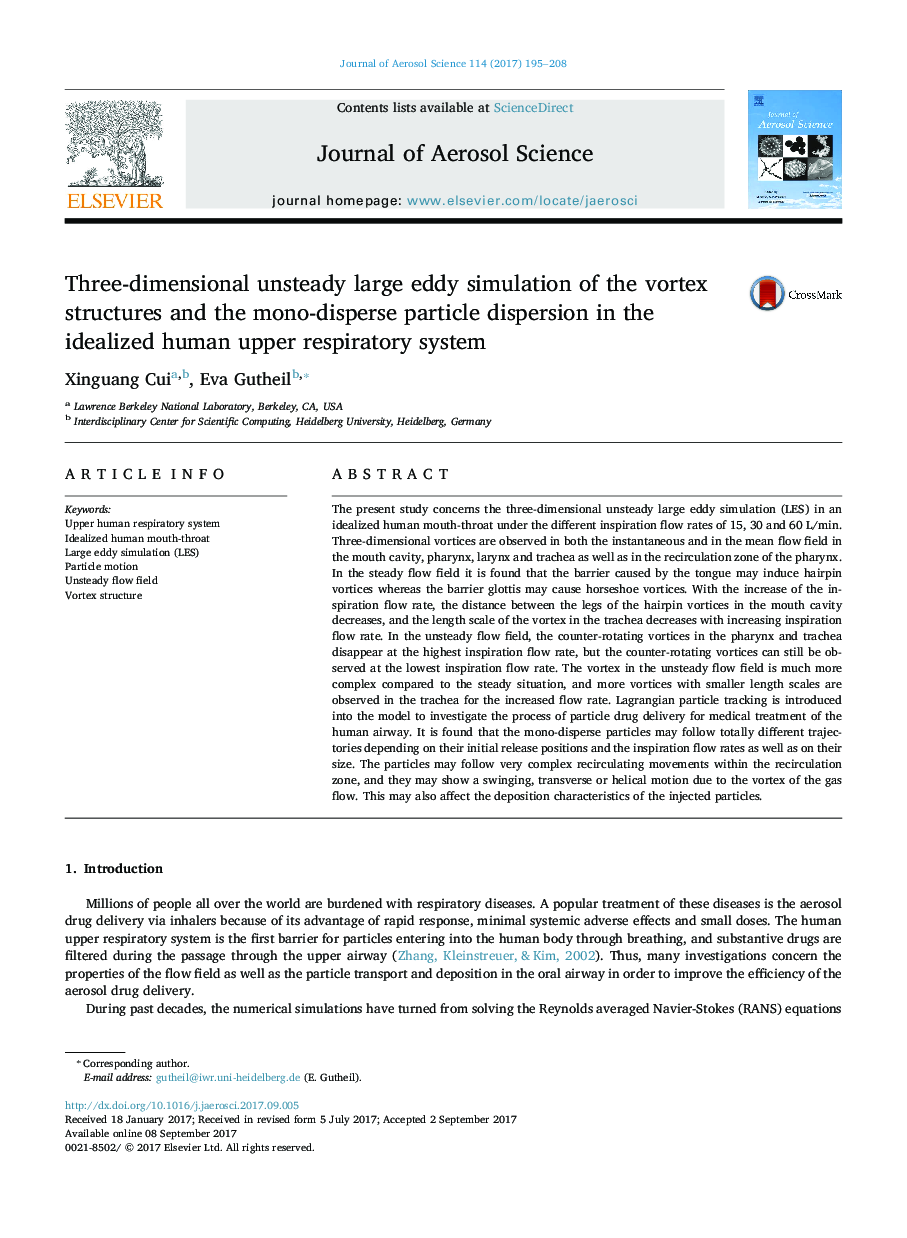| Article ID | Journal | Published Year | Pages | File Type |
|---|---|---|---|---|
| 5753877 | Journal of Aerosol Science | 2017 | 14 Pages |
Abstract
The present study concerns the three-dimensional unsteady large eddy simulation (LES) in an idealized human mouth-throat under the different inspiration flow rates of 15, 30 and 60Â L/min. Three-dimensional vortices are observed in both the instantaneous and in the mean flow field in the mouth cavity, pharynx, larynx and trachea as well as in the recirculation zone of the pharynx. In the steady flow field it is found that the barrier caused by the tongue may induce hairpin vortices whereas the barrier glottis may cause horseshoe vortices. With the increase of the inspiration flow rate, the distance between the legs of the hairpin vortices in the mouth cavity decreases, and the length scale of the vortex in the trachea decreases with increasing inspiration flow rate. In the unsteady flow field, the counter-rotating vortices in the pharynx and trachea disappear at the highest inspiration flow rate, but the counter-rotating vortices can still be observed at the lowest inspiration flow rate. The vortex in the unsteady flow field is much more complex compared to the steady situation, and more vortices with smaller length scales are observed in the trachea for the increased flow rate. Lagrangian particle tracking is introduced into the model to investigate the process of particle drug delivery for medical treatment of the human airway. It is found that the mono-disperse particles may follow totally different trajectories depending on their initial release positions and the inspiration flow rates as well as on their size. The particles may follow very complex recirculating movements within the recirculation zone, and they may show a swinging, transverse or helical motion due to the vortex of the gas flow. This may also affect the deposition characteristics of the injected particles.
Related Topics
Physical Sciences and Engineering
Earth and Planetary Sciences
Atmospheric Science
Authors
Xinguang Cui, Eva Gutheil,
